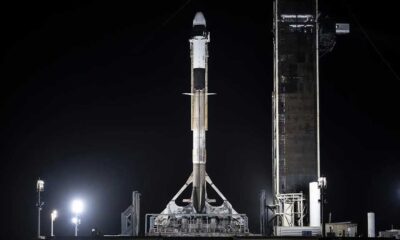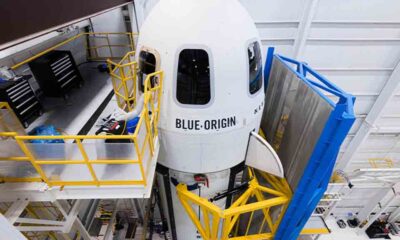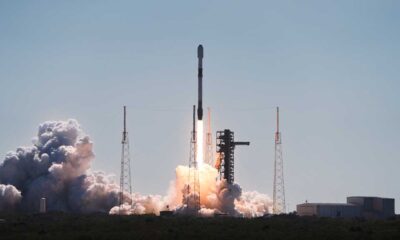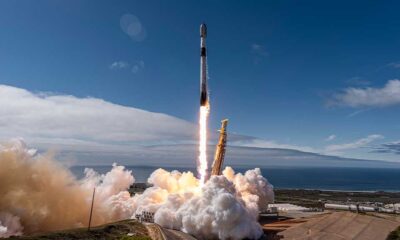Blue Origin
Blue Origin New Glenn Pathfinder payload is ready for launch

Blue Origin has confirmed that the New Glenn rocket payload is ready to launch the first mission – NG-1 in December.
The company has shared visuals of the Blue Ring Pathfinder payload encapsulation into New Glenn’s payload fairings. The company will integrate this payload on top for the second stage after a hot-fire test.
This giant rocket will liftoff from Launch Complex 36 at Cape Canaveral Space Force Station, Florida. However, the company has not shared any launch opportunities as there are only 20 days left to enter 2025.
Blue Origin developed Pathfinder to test Blue Ring’s core flight, ground systems, and operational capabilities. The NG-1 will be a part of the Defense Innovation Unit (DIU) Orbital Logistics prototype, which is also funding such efforts.
The mission will demonstrate a communication array, power systems, and flight computer affixed to a secondary payload adapter ring.
#NewGlenn‘s first mission will carry our Blue Ring Pathfinder and is now ready for launch vehicle integration. Learn more: https://t.co/5p7sv7zltZ pic.twitter.com/natPVPAYGN
— Blue Origin (@blueorigin) December 9, 2024
The pathfinder will verify Blue Ring communication transmission from orbit to ground and test in-space telemetry, tracking and command hardware, and ground-based radiometric tracking for future Blue Ring missions.
The first mission intends to keep New Glenn’s second stage with Pathfinder in orbit for six hours to conduct all tests.
The New Glenn rocket stands 320 feet tall and has a meter payload fairing. Its first stage is reusable and can be recovered vertically on a droneship. The first stage can be used for up to 25 missions featuring seven BE-4 engines.
The booster burns liquid oxygen/liquefied natural gas, and each engine generates 550,000 lbf of thrust at sea level with deep-throttle capability.
The second stage equips two BE-3U with liquid oxygen and liquid hydrogen LH2 engines for vacuum thrust in space.
While waiting for regulatory approval for a hot fire and launch, Blue Origin has conducted tank chilling of the first and second stages.
It was the first time, the company had filled the propellant in both stages. Check the footage below.
While we wait for regulatory approvals for hotfire and launch, here’s a photo (and a bonus video) of our “chilling” GS1. This marks the first time we’re tanking our first stage with liquefied natural gas (LNG) and liquid oxygen (LOX). The first stage LOX tank is nearly 30,000 cu.… pic.twitter.com/S9wDtCUFNI
— Dave Limp (@davill) December 8, 2024
Another good morning at the Cape. GS2 tanking test is done and nominal across the board. pic.twitter.com/g72FWUBvYx
— Dave Limp (@davill) December 10, 2024
(source)










